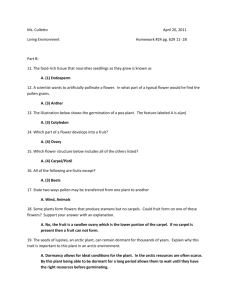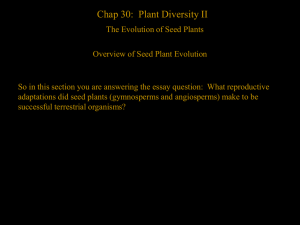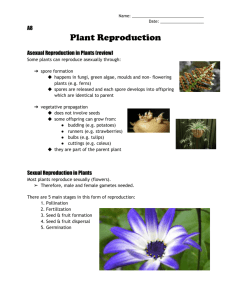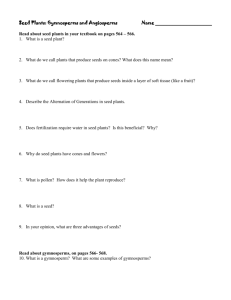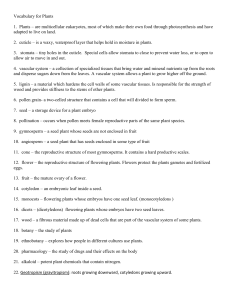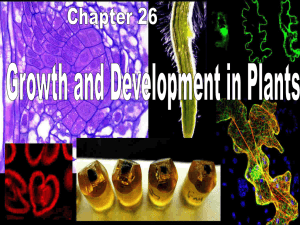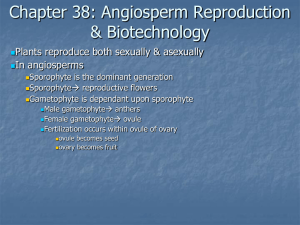Plant Reproduction and Plant Diversity II
advertisement
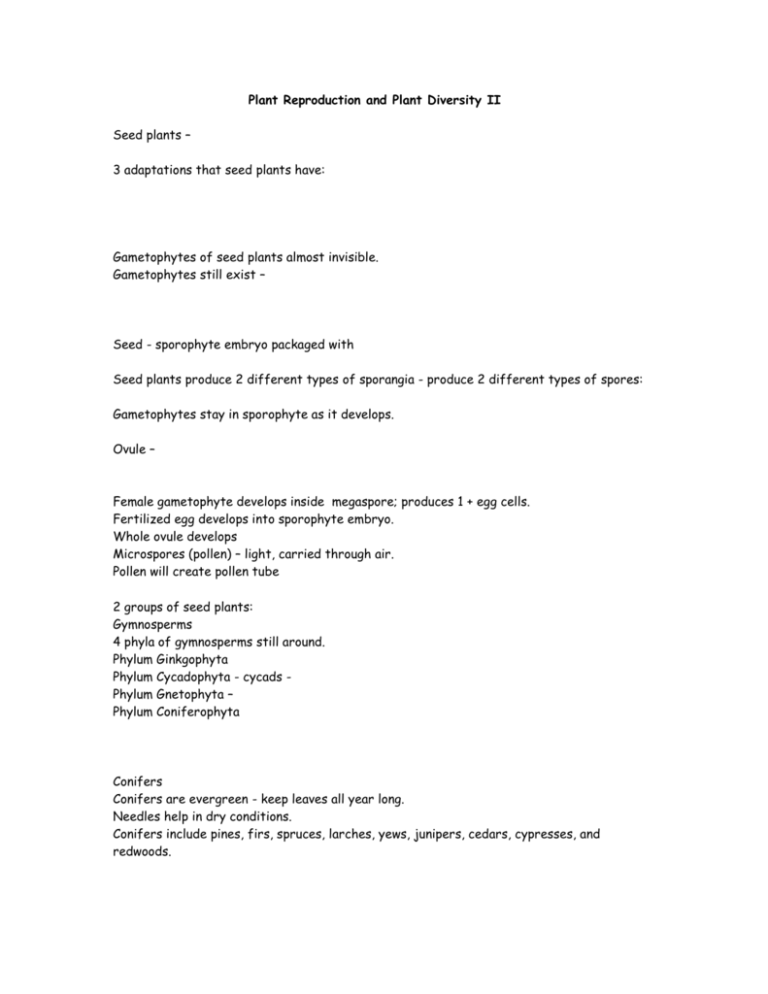
Plant Reproduction and Plant Diversity II Seed plants – 3 adaptations that seed plants have: Gametophytes of seed plants almost invisible. Gametophytes still exist – Seed - sporophyte embryo packaged with Seed plants produce 2 different types of sporangia - produce 2 different types of spores: Gametophytes stay in sporophyte as it develops. Ovule – Female gametophyte develops inside megaspore; produces 1 + egg cells. Fertilized egg develops into sporophyte embryo. Whole ovule develops Microspores (pollen) – light, carried through air. Pollen will create pollen tube 2 groups of seed plants: Gymnosperms 4 phyla of gymnosperms still around. Phylum Ginkgophyta Phylum Cycadophyta - cycads Phylum Gnetophyta – Phylum Coniferophyta Conifers Conifers are evergreen - keep leaves all year long. Needles help in dry conditions. Conifers include pines, firs, spruces, larches, yews, junipers, cedars, cypresses, and redwoods. Life cycle of gymnosperms Conifers - heterosporous Produce During pollination, pollen falls on ovule. Creates pollen tube that digests through megaspore. Megaspore, now fertilized, goes through meiosis 1 cell turns into female gametophyte, others (archegonia) will develop within gametophyte. Angiosperms Angiosperms Phylum Anthophyta - all angiosperms. Divided into 2 groups: Monocots - Angiosperms - long tracheids – Most angiosperms rely on pollination through animals; grasses Flower - specialized shoot – Sepals - base of flower – Petals lie inside ring of sepals Male organ - stamen Anther – Female organ - pistil Stigma – Style connects stigma to ovary at base of pistil which allows Entire structure – Ovule contains. Fruit – As seeds develop from ovules after fertilization Fruit helps protect Some fruits, dandelion, Burrs that stick to animals Fruit develops after pollination triggers hormonal changes Wall of ovary becomes pericarp If flower not pollinated 3 different types of fruits. Simple fruits come from Aggregate fruit (blackberry) – Multiple fruit (pineapple) Ovules - contain Angiosperm life cycle starts with mature flower on Anthers of flower produce Ovules produce megaspores that form After its release from anther, Plants can self-pollinate; Pollen grain begins growing from stigma toward ovary. Discharges 2 sperm cells into female gametophyte. 1 sperm fuses with egg nucleus to form diploid zygote. Develops into embryo. Embryo has rudimentary root; one (in monocots) or two seed leaves (in dicots), cotyledons. Other sperm nucleus fuses with 2 polar bodies to form endosperm, (triploid or 3n) in monocots. Dicots - nutrition goes directly to cotyledons. As ovules develop into seeds, ovary develops into fruit. Conditions favorable - germination occurs (seed coat ruptures, embryo emerges as seedling) Seedling uses food stored in either endosperm The fruit Ovary of flower develops into fruit, Wall of ovary becomes pericarp, Apples As seed develops - enters dormancy – 1st organ to emerge from germinating seed - Asexual reproduction Plants can clone – Fragmentation – Scientists use this process to Co-evolution Certain animals only eat certain plants Plants evolved special fragrances – Plants and human welfare All fruit and vegetable crops Corn, rice, wheat Use plants for medicinal purposes;

